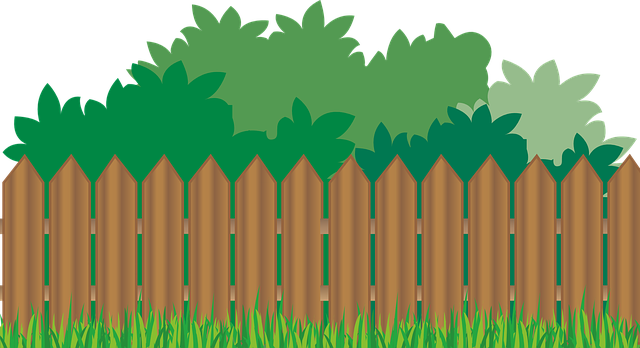Large properties present unique fencing challenges, demanding durable, cost-effective solutions that balance aesthetics with functionality. This article delves into the diverse world of fencing, guiding homeowners through understanding specific needs, exploring traditional versus modern options, and uncovering benefits of low-maintenance systems. We’ll delve into suitable materials, creative budgeting strategies, and long-term maintenance tips, empowering readers to make informed choices for their expansive landscapes.
- Understanding Fencing Needs for Large Properties
- Traditional vs. Cost-Effective Fencing Options
- Benefits of Low-Maintenance Fencing Solutions
- Durable and Economical Materials to Consider
- Creative Ways to Reduce Fencing Costs
- Long-Term Savings: Planning and Maintenance Tips
Understanding Fencing Needs for Large Properties
Large properties present unique challenges when it comes to fencing, as the scale and diverse landscapes demand specialized solutions. Beyond basic security concerns, homeowners must consider aesthetic preferences, privacy requirements, and the integration of fencing with existing natural features or architecture. For instance, a sprawling ranch may require fences that complement open spaces while defining animal enclosures, whereas an urban estate might focus on security and visual appeal to blend with neighboring properties.
Understanding these varying needs is essential for selecting cost-effective solutions. It involves assessing the property’s layout, identifying key areas requiring fencing, and determining desired features such as height, material, and any additional functionality like gates or access points. This comprehensive approach ensures that the chosen fencing solution not only aligns with budget constraints but also meets the specific demands of the large property in question.
Traditional vs. Cost-Effective Fencing Options
When considering fencing options for large properties, homeowners often face a choice between traditional and cost-effective solutions. Traditional fencing materials like wood and metal have been popular for years due to their durability and aesthetic appeal. However, these options can be expensive, requiring regular maintenance and repairs over time. The ongoing costs of treatment against rot and pests, as well as painting or re-welding, can add up significantly.
In contrast, cost-effective fencing solutions offer a more budget-friendly approach without sacrificing quality or functionality. These modern alternatives are designed to be low-maintenance, long-lasting, and often feature innovative materials that provide superior strength and resistance to the elements. By choosing these options, property owners can save on initial installation costs and enjoy reduced upkeep over the life of the fence.
Benefits of Low-Maintenance Fencing Solutions
Low-maintenance fencing solutions offer numerous advantages for large property owners, especially those with busy lifestyles or limited time for upkeep. These systems are designed to stand the test of time and require minimal attention, saving property owners both money and effort in the long run. By opting for low-maintenance options, you can expect reduced costs associated with regular cleaning, painting, and repairs, which are often necessary with traditional fencing materials.
Such solutions often feature durable, weather-resistant materials that can withstand harsh environmental conditions, including heavy rainfall, extreme temperatures, and strong winds, common in larger properties. This longevity ensures the fence remains aesthetically pleasing and functional for years, reducing the need for frequent replacements or major repairs. Additionally, low-maintenance fencing options often come with innovative designs that enhance security while maintaining a sleek and modern look, contributing to the overall curb appeal of your property.
Durable and Economical Materials to Consider
When considering fencing solutions for large properties, opting for durable and economical materials can significantly impact both the longevity of your fence and your budget. Steel and aluminium are excellent choices due to their resilience against rust, rot, and damage caused by harsh weather conditions and wildlife. These materials are highly versatile, allowing for a range of designs from traditional styles to modern aesthetics.
Wooden options, such as treated cedar or pressure-treated pine, offer natural beauty and affordability. While they may require more maintenance than steel or aluminium, regular sealing can prolong their lifespan, making them a viable cost-effective choice for large properties seeking a classic look.
Creative Ways to Reduce Fencing Costs
Many homeowners looking to fence large properties often face significant budget constraints. However, there are creative ways to reduce fencing costs without compromising on quality and security. One innovative approach is to consider modular fencing systems that offer both flexibility and affordability. These pre-assembled panels can be easily installed and interlocked, reducing labour costs and the need for extensive site preparation.
Another cost-saving strategy involves using eco-friendly materials. Natural barriers like hedges or native plant fences not only provide privacy but also serve as an alternative to traditional fencing. Additionally, exploring local recycling programs for reclaimed fence materials can offer a sustainable and budget-friendly option. By thinking outside the box and embracing creative solutions, homeowners can effectively manage fencing expenses while still achieving their desired security and aesthetic goals.
Long-Term Savings: Planning and Maintenance Tips
When considering cost-effective fencing solutions for large properties, one of the key benefits to keep in mind is the potential for long-term savings. While initial installation costs might vary depending on the chosen material and design, well-planned fencing can significantly reduce future expenses. For instance, opting for durable yet affordable materials like vinyl or wood can minimize maintenance requirements compared to more exotic options, leading to fewer outlay over time. Additionally, strategic placement of fences can help maximize their lifespan by offering protection against extreme weather conditions and limiting exposure to elements that may cause deterioration.
Regular planning and maintenance are crucial in achieving these savings. Regular inspections should be conducted to identify any signs of damage or wear and tear early on, enabling prompt repairs that prevent minor issues from escalating into costly replacements. Staying proactive with maintenance tasks such as cleaning, painting, and sealing can also extend the life of your fence, ensuring it continues to serve its purpose efficiently without incurring frequent replacement costs.
